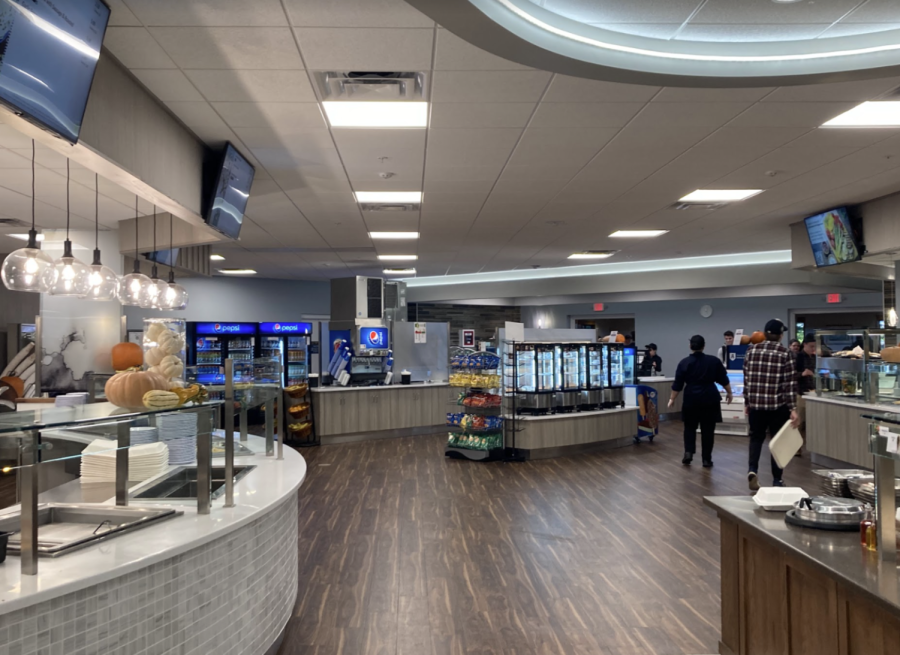Calorie counts off the screen at Davison
Remodeled Davison Hall with new and revamped menu
October 20, 2022
Starting at 12:30pm each day, common hour takes place at Saint Anselm College. Masses of students coming in from class or studying flood the entrance of Davison Hall and push through lines for a fresh made deli sandwich or a warm pasta dish at the Trattoria division. However, apart from the long wait in line and the difficult choice between handmade sushi or a chicken cheese sandwich, students also experience a more personal, subtle stress in Dave.
The school’s dining hall displays the calorie count of all food items to purchase on a televised screen above the service windows. While these numbers may promote a mindful eating system, for some, calorie counting is the root of private psychological distress and mental health concern.
The Saint Anselm mental health committee has contacted AVI dining representatives on campus bringing forth their concerns relating to the caloric display. Senior and co-chair of the mental health committee, Christopher DeMarkey, stated that the committee had spoken with dining services to see if “a possible change could be made with regards to the calorie count on the tv screens.” Furthering their concerns, DeMarkey claims, “The main issue with having the calorie count front and center, whether it be on one of the tv screens or website is that it can be quite triggering for those struggling with eating disorders and could lead to unintended negative outcomes.”
The emphasis placed on calorie counting, for those with or developing eating disorders, may bring about feelings of guilt, confusion, and stress. Eating disorders themselves are behavioral conditions characterized by severe and persistent disturbance in eating behaviors and associated with distressing thoughts and emotions according to psychiatric discovery.
Eating disorders as a whole affect around 9% of the United States population, and together most develop in adolescence and young adults. Disorders include anorexia nervosa, bulimia nervosa, and binge eating, all of which are argued to be negatively impacted by calorie counting. Health professionals are coming to the understanding that calorie counting is becoming an antiquated practice that has other nutrition tracking counterparts that are argued to be more beneficial.
Obesity, uniquely in America, is a challenging public health concern that affects millions in the U.S. Policy makers are actively seeking solutions to prevent and combat any health effects related to obesity. In 2010 the Patient Protection and Affordable Care Act was set in place that includes calorie labeling mandates. This policy is the issue that AVI had run into, where, according to their conversation with DeMarkey, “in order to comply with federal regulations all restaurants/food vendors have to provide the calorie count.” While the American government has aimed to encourage individual accountability for what a person may consume, the open display of calories has presented concern for students on campus.
DeMarkey and his efforts alongside the school’s mental health committee has resulted in the intentional placement of calorie counts under a nutritional information section of the menu. Online, instead of having the count be on display explicitly, one is required to click on the food item to observe any nutritional information needed.
DeMarkey explains, “We have a great relationship with AVI and we’re so excited to see the change implemented this past week! Now the calorie count can be seen under the nutritional information section on their website.” Here students will be able to observe a calorie statement of “2,000 calories a day is used for general nutrition advice, but calorie needs vary. Additional nutrition information available upon request,” and any additional nutritional criteria necessary for a student to make deliberate and healthy choices. DeMarkey and the mental health committee’s efforts with AVI have demonstrated the effectiveness that student organizations have here on the Saint Anselm campus.



